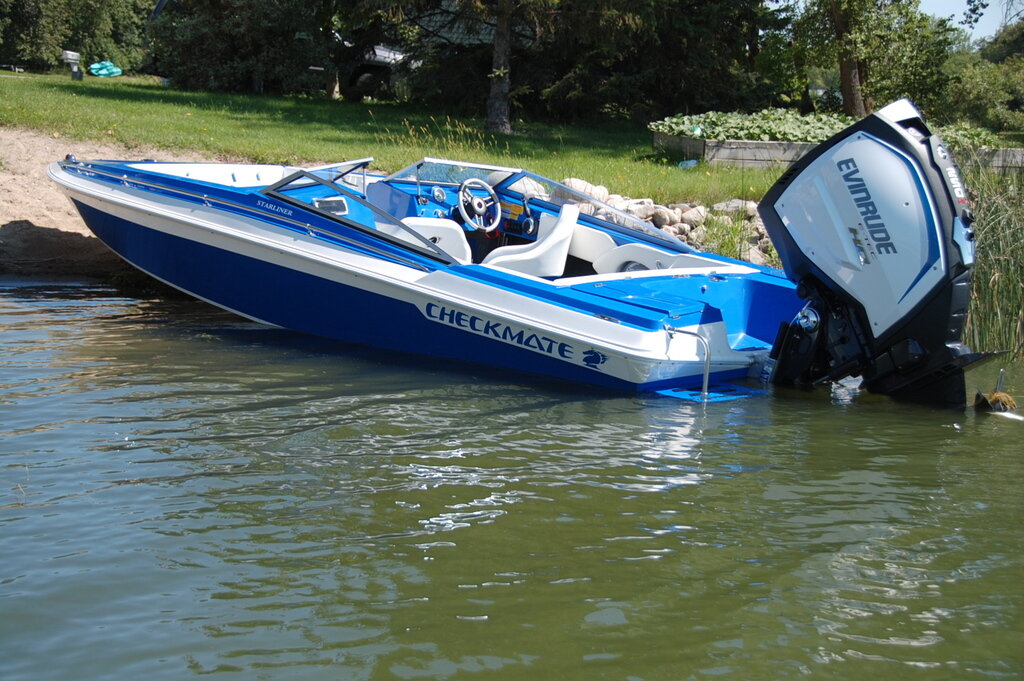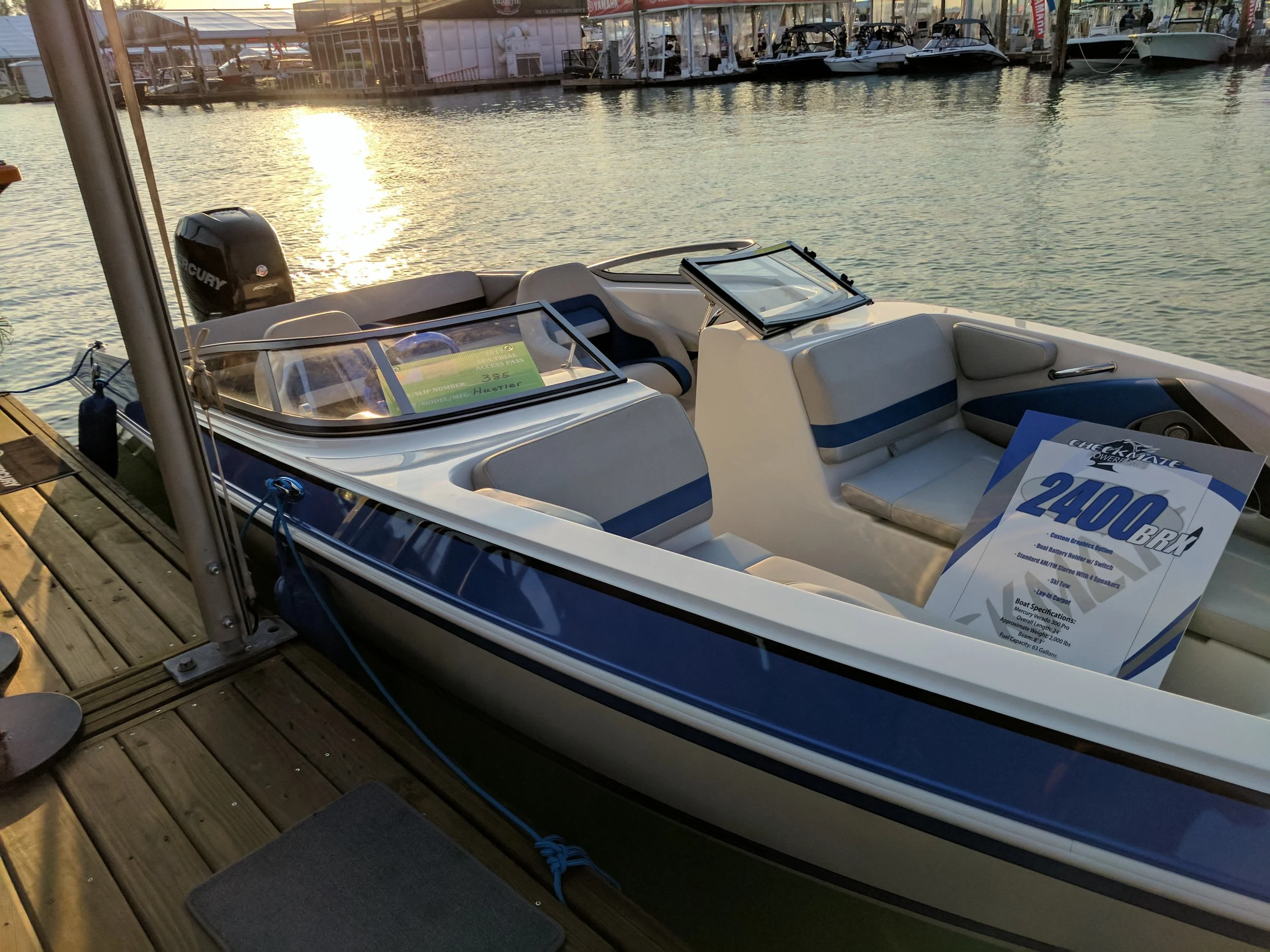Bill Combs and the Winning Formula of Checkmate Boats
Ohio has a unique history in performance boats but it would be impossible to talk about boats and Ohio, without mentioning Bill Combs and Checkmate Boats. Bill and his original partner Bill Downward were influential in the performance boat movement in the sixties. They started in sales and service but became interested in racing, which led to manufacturing not soon after. What is amazing is Combs and Downward were instrumental in Cobra boats starting, which became Baja boats, their nemesis. Cobra essentially was a small fabrication shop down the street in Bucyrus Ohio and used a mold with Bill Comb’ blessing to get started, the 16’ Cobra. At least that’s how I remember the story going.
Would Bill Combs anticipate how big Checkmate and Baja Boats would become? Probably not. But even though he helped spawn one of their biggest competitors operating in the same town it actually may have helped Checkmate’s staying power. There are a few reasons Checkmate lasted as long as they did and it is worth looking at as the business of building boats has not changed all that much in some ways.
I really like Checkmate Boats and as a kid I got to meet Bill Combs at the Chicago Marine Exhibition, then one of the largest marine industry shows, and it was a highlight for me. Checkmates were pretty common where I grew up and my Dad bought a used 1991 Starflite with a Mercury 3.4 275 when I was about 15 years old. The sleek Checkmate was a head turner back then; not the fastest, but a solid boat, great build quality and that signature Checkmate look. After that, my Dad got a new 1997 Checkmate 21 Pulsare, which is still in the family. So it’s safe to say I’m a fan. Checkmate’s unique design, simplicity and consistent quality were their keys to success.
Me at 15 driving a Checkmate Starflite with a rare 3.4 Mercury 275.
Even though I’m a little critical of Checkmate Boats’ quality over the years, compared to many mainstream builders, they have very good quality. I would say they weren’t pioneer’s in any one thing, but did everything well. Their gelcoat work is usually excellent, all colors in the gel and a great finish. All Checkmate Boats were cored with balsa with a pretty solid layup, and even though they used wood stringers and transoms, they usually built them well enough that they lasted a very long time.
To be fair, wood was possibly the best option for structure up until about the late nineties when closed cell foam and other composite boards became more viable. Some of the most well known and respected boats built today use balsa in some of their construction, mostly for the natural composite’s incredible strength to weight and reasonable cost. Even today, some very notable boat builders use wood transoms, so the criticism aimed at that type of construction is valid but one could make a case for using it.
A beautiful Checkmate Starliner we featured a long time ago. This was restored by the Checkmate factory. Find it in our restoration section.
A mainstay for Checkmate was their single engine outboard lineup, usually from 16 to 21’ and they were very well known hulls. From the smaller MX boats, to the Enchanter, Predictor and Exciter. Checkmate got bigger as a company and so did their boats. They did stick to their formula for the most part, which was smart. The 24’ Enforcer, which later was redesigned as the 2400 Pulsare, was a deeper heavier hull. Later, the Convincor lineup emerged and grew as deeper bigger boats that could handle bigger water and still perform well. The Starflite was popular in the eighties and still a beautiful looking boat. Family performance boats, simple design, consistent quality and value were Bill Combs’ winning formula.
A classic V-mate we featured in a our restorations a while ago.
Part of the Checkmate Boats design was a simple seating layout, 2+3 configuration and a signature look; the windshield and decklines are very recognizable across most models. Checkmates were a semi custom, a production boat, with custom qualities. Simplicity was their game and that’s a good game to be in when everyone else is trying to reinvent the wheel.
Clean lines, simple interior. The 21’ Pulsare is fast and was one of the best all around Checkmate models.
The best Checkmate models to me were still being made up until recently, the 2100 Pulsare, and the 2400 Pulsare closed deck models. Some Checkmates are pretty fast, not as fast as more dedicated performance boat companies, but for family market boats, very good performers. The 2100 is in many ways their most well rounded model, fast, sleek and a very good design overall. There are some custom rigged 21 Pulsares out there, most notably by Randy Corson of Florida, that were running 95 to 97 MPH with Mercury Racing 300 XSs. That’s a fast 21 foot boat by any measure.
Over the years, Checkmate hulls changed in design, and Checkmate experimented with many configurations. Early models had shallow deadrise V hulls or small pads, and when the larger models came in, Checkmate started using 22 and 24 degree hulls for superior rough water handling. The Convincor models were deep, straight Vs and were very good performers, if not a little old school. The ZT models were a modern version of the Convincors, with molded swim platforms and stepped hulls.
If you look at a Starflite hull, it actually has steps and notch in the transom; so you could tell they were trying to innovate in many ways. The last “new” boat when Combs was at the helm was the 21 Pulsare. A pad bottom, 19 degree hull, about 1,400 Lbs and well balanced.
The unique bottom of a Starflite / Starliner. Steps and a notch, but no pad held it back a bit.
Checkmate boats did almost everything in house, including upholstery. Everything was going reasonably well until the financial crisis of 2008. The future was grim. Doug Smith, formerly of the then defunct rival Baja acquired the company. Even though Baja competed with Checkmate, and grew way bigger, they never had the quality or design that Checkmate had in my opinion.
A rare 2800 OBX. This one had two sets of bolsters and a bench, with twin Mercury Racing 300 XS.
Even though some new models emerged like the BRX 2000 and the successful 2400 were good boats the market was limited and the economic recovery was slow. Smith also brought in the Convincor 260, which I believe was a Baja design but not too successful. Smith essentially updated the interiors, added a couple models but didn’t really innovate. Baja became a mass producer, far exceeding Checkmate in volume, but succumbed to lack of innovation and poor design like so many boat companies do. Often, the fear of change or the investment of innovation is the downfall.
One of their more successful later models, the 2400 was a simple, great looking family sport boat.
Only five years after Smith acquired Checkmate, the time came for a new direction, Global Marine Power came in and bought the company. Retaining the operation in Bucyrus Ohio and keeping the lineup intact for the most part. Hindsight is 20/20, so it’s easy to say they should have done this, or should have done that but in the end it didn’t work.
The BRX 2000 was a departure in design and aimed at the entry level market. The bowrider didn’t standout that well with so much competition and didn’t capture the essence of Checkmate in my mind.
To me, Checkmate Boats needed more of an overhaul of the lineup, and a strong marketing effort to get more boats on the water. Again, hindsight is easy and building boats is tough, so it’s not a criticism of the team at Checkmate, they are great guys and are more disappointed than anyone in the outcome. It takes great innovation and a serious vision to redirect a company, especially one with such a significant legacy.
Bill Combs and his early partner Bill Downward built one of the longest lasting performance boat companies of this era, that’s pretty notable. Checkmate Boats was responsible for getting thousands of people into performance boats and had been many enthusiasts “first” performance boat. I was already hooked on performance boats at 15 years old, but I remember getting to drive my Dad’s Starflite with the big Mercury 275 and it was memorable to say the least.
Gone but not forgotten.
Bill Combs outlasted most in the high performance game. He was definitely winning in this picture.
















